
KEYNOTE SPEAKERS
DAY 1 Wednesday 6th of June – Plenary 1, 09:00-10:40
Roland BeutlerDistribution Strategy Manager at Südwestrundfunk, Germany Keynote: Transcending the Limits of Broadcasting - Holistic Services by Transparent Delivery.Presentation slides: here. |
▼ |
|---|---|
Dr Beutler has been participating in EBU Technical activities for more than 15 years and has chaired several EBU groups dealing with the future of radio distribution systems. He was chair of the several of EBU’s Strategic Programmes and Project Teams. Currently he acts as chairman for the Strategic Programme “Future Distribution”. Roland Beutler is also involved in ITU and CEPT work and has been responsible for several of their working groups, both radio and TV related. He participated in WRC-12, WRC-15 and RRC-06 and was heavily involved in the preparation of the latter conference. Moreover, he has published several articles and four books on frequency and network planning for digital terrestrial broadcasting systems, the Digital Dividend of Broadcasting and the Evolution of Broadcast Content Distribution. Abstract: Broadcasting companies have been providing more and more services over the last decades. In addition to traditional linear TV and radio programmes on-demand offers have been made available using every conceivable Internet platform. Social media support has been crucial to reach in particular the younger generation. With the help of new telecommunication technologies branded as “5G” broadcasters hope to integrate all services to offer a holistic user experience. Delivery of these highly personalized services shall be completely transparent to users. This poses very stringent requirements on distribution technologies with regards to performance, flexibility and availability. However, key for success will be win-win business arrangements between all stakeholders along the entire value chain. | |
Thomas StockhammerDirector Technical Standards at Qualcomm, Germany Keynote: enTV Rel-14: A Transport System for Next Generation Broadcaster Services.Presentation slides: here. |
▼ |
|---|---|
Abstract: This presentation will provide an overview of the Rel-14 enTV features. In particular, we will discuss the motivation for this new design and will provide an overview of the relevant features, both from the inside as well as from the usage and interop perspective. The nodular design and the individual components will be explained, providing also relation to established and emerging other broadcast technologies as for example developed in DVB and ATSC.
| |
Erik Guttman3GPP SA Chairman at Samsung Electronics, UK Keynote: 5G Advances in 3GPP.Presentation slides: here. |
▼ |
|---|---|
Abstract: The 5G standardization program in 3GPP moves swiftly to wrap up the first phase while at the same time identifying the focus of work on targets for the second phase – which will wrap up at the end of 2019 and culminate in the IMT-2020 submission by 3GPP OPs. 5G embraces and extends 4G technologies while adding significantly in each area. We will consider the overall program as well as the specific advances already achieved in phase 1 and under consideration for phase 2.
| |
DAY 2 Thursday 7th of June – Plenary 2, 09:00-10:40
Takuya ShitomiResearch Engineer at NHK, Japan Keynote: NHK STRL Three-Year Plan FY2018-2020 - Creation for 2020 and beyond. |
▼ |
|---|---|
Abstract: NHK has formulated a new three-years corporate plan (FY 2018 – 2020) to deliver the highest-level broadcasting and services in 2020 and to evolve into “public media”. In this corporate plan, NHK will explore the realization of “public value” by expanding its use of the Internet to deliver accurate, timely programming to an increasingly global audience. NHK STRL believes that our mission is to play a leading role in the research and development of state-of-the-art broadcasting technologies and services for sustainable development of broadcasting to 2020 and beyond. This presentation introduces an overview of Three-years R&D plan that is published at NHK STRL OPENHOUSE 2018.
| |
Maria CuevasHead of Mobile Core Networks Research at BT, UK Keynote: What is network convergence and why do we need it?Presentation slides: here. |
▼ |
|---|---|
Abstract: The telecoms industry is undergoing a major transformation towards 5G networks in order to fulfil the needs of existing and emerging use cases. Traditionally, fixed and mobile networks have been deployed as separate systems delivering independent but often similar services such as broadband, messaging, voice and video communications, etc. It is widely anticipated that the 5G architecture should seamlessly support both fixed and mobile access technologies under a fully converged end-to-end system in order to deliver future service requirements. This presentation will:
| |
Benjamin BrossProject Manager at Fraunhofer Institute for Telecommunications - Heinrich Hertz Institute, Germany Keynote: Future Video Coding beyond HEVC.Presentation slides: here. |
▼ |
|---|---|
Abstract: Compressed video data are growing at a faster rate than ever before. Already today, video data make up by far the highest percentage of bits on the Internet and in mobile traffic. This demonstrates the need for even more efficient compression which goes beyond the current state of the art High Efficiency Video Coding standard (HEVC). In order to master this demanding challenge, the ITU Video Coding Expert Group (VCEG) and the ISO/IEC Moving Pictures Expert Group (MPEG) have already started working together in the Joint Video Experts Team (JVET). Last October, JVET issued a call for proposals for video coding technology beyond HEVC. Fraunhofer HHI has responded to the call by submitting cutting edge coding technology to be included in the final standard by 2020.
| |
DAY 3 Friday 8th of June – Plenary 3, 09:00-10:40
Rich ChernockChief Science Officer at Triveni Digital, USA Keynote: ATSC 3.0: Where are we and where are we headed?Presentation slides: here. |
▼ |
|---|---|
Dr. Chernock is chairman of the ATSC Technology Group on ATSC 3.0 (TG3) and chairs the AHG on service delivery and synchronization for ATSC 3.0. He was previously chairman of the ATSC Technology and Standards Group (TG1). He is also the Distinguished Lecturer Chair for IEEE BTS and a member of FOBTV. In another life, he used transmission electron microscopy to study materials characteristics for advanced ceramics packaging and semiconductor technology at IBM. His ScD was from MIT in the field of nuclear materials engineering. Abstract: ATSC 3.0 has been released – a next-gen broadcast TV system that allows broadcasters to provide new services to viewers. ATSC 3.0 provides a flexible and more efficient physical layer, mobility, Ultra-High Definition (UHD) images, new solutions for immersive and personalized audio, an all IP based transport system, hybrid broadcast/broadband services, advanced emergency alerting and incorporation of new user technologies such as interactivity. This presentation will provide an overview of Next Gen TV from a viewpoint of what has been achieved – what kinds of new opportunities and services do broadcasters have to engage their viewers. It will also address some of the implementation considerations for broadcasters. As we look to the future, we will find that the old paradigm of slowly changing technologies is probably over. Standards and technologies for broadcast television will need to become more nimble and adaptable – more like those for the Internet. This presentation will conclude with some thoughts on how to achieve that.
| |
Dazhi HeDeputy Chief Technology Officer of NERCDTV, China Keynote: Considerations and Expectations of Next Generation Broadcasting Systems in China.Presentation slides: here. |
▼ |
|---|---|
Dr. Dazhi He is a member of Chinese delegation in ITU and very familiar with the rule of ITU. He has made a lot of contributions to help standard of DTMB be accepted by ITU as an international standard. Dr. Dazh is also an expert of digital satellite broadcasting system and ever successfully developed the whole system of Chinese satellite television broadcasting system (ABS-S). Dr. Dazhi He is well-known in ATSC3.0 and he has lead a team to attend the standardization of ATSC 3.0. Now some of key technologies from NERCDTV have been accepted to be the standard of ATSC3.0 because of his effort. He is currently a deputy Chief Technology Officer of NERCDTV and is leading the technology innovation and standardization of next generation broadcasting system in NERCDTV. Abstract: 5G broadband wireless system has recently become one of the hot research frontiers. In China, the big three Chinese telecos have committed to invest $200B over the next seven years to build the world’s largest 5G infrastructure. The ongoing research and development of Chinese next generation broadcasting system is taking seriously considerations on the possible convergence of the broadcasting and mobile broadband eco-systems. The next generation broadcasting system requirements in the 5G era shall include various new elements and features, such as IP-centric broadcast-broadband compatible frame structure, cooperative transmission cross networks, dynamic spectrum access, very high capacity and data rates, ubiquitous deep and reliable coverage, in-band low delay interactivity, etc. The next generation systems will not only be capable of providing efficient and cost effective services in modern urban population centers, but also delivering high quality and diversified state-of-the-art interactive media services to the general public in China’s vast rural areas to thousands and millions of countryside residence. The media broadcasting should be an element of the 5G eco-system, or as part of the 5G heterogeneous networks for the future connected society.
| |
Peter SiebertExecutive Director, DVB Project Office, Switzerland Keynote: Standards and the Future of Broadcast Media Delivery.Presentation slides: here. |
▼ |
|---|---|
Dr Peter Siebert received his M.Sc. degree in 1984 and his Ph.D. degree in 1989 in physics from the University in Frankfurt, Germany. In addition he holds a degree in economics from the University in Hagen, Germany and an MBA from the Open University in Milton Keynes, UK. Abstract: Over the last 25 years Standards Developing Organisations (SDO) like DVB have provided the necessary specification for the transition from analogue to digital TV. Analogue Switch Off has happened in many parts of the world. Now, with HD and UHD being specified as well, what will be the future roadmap for broadcast media technology and how can SDOs provide the technology for next generation broadcast? | |







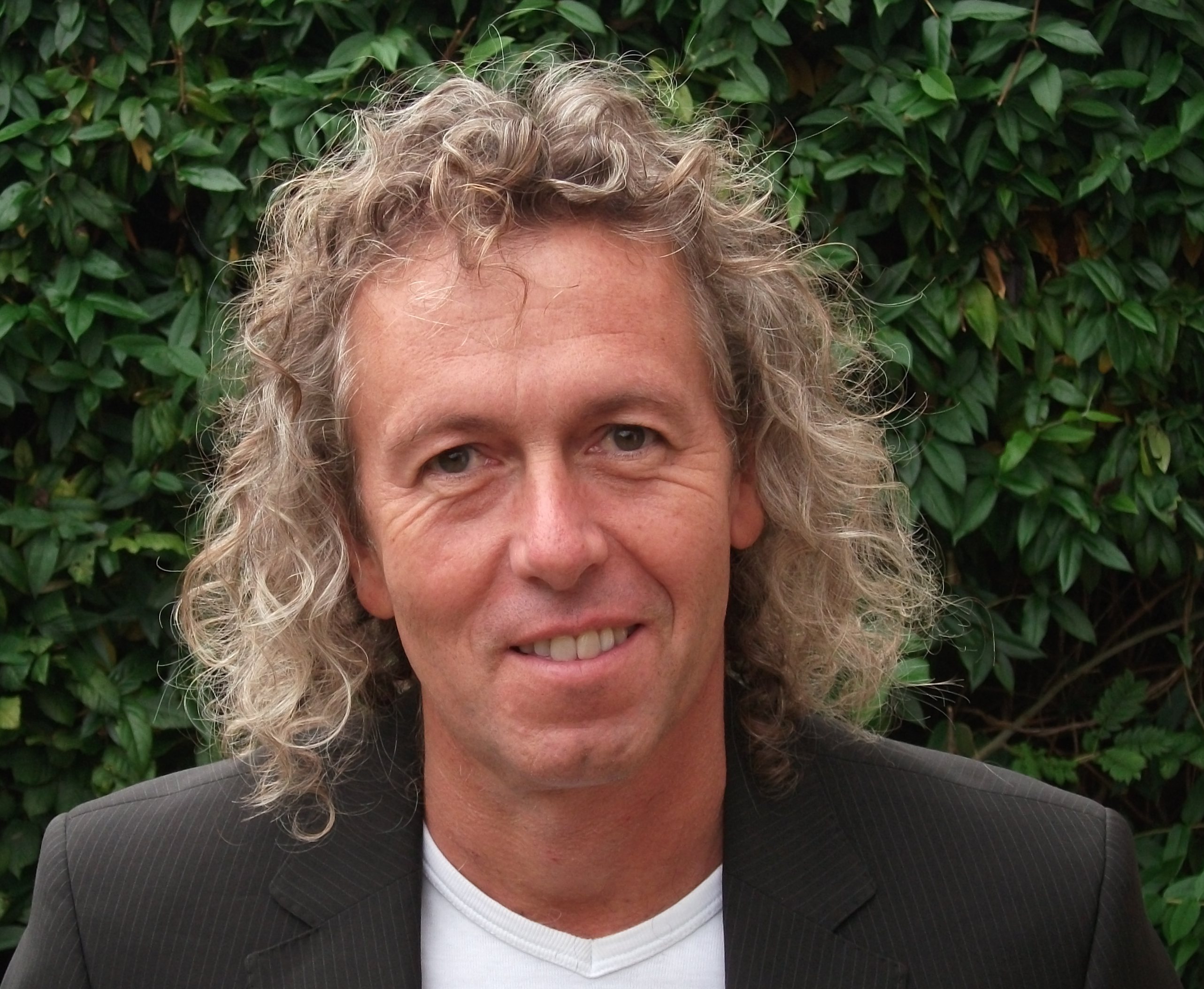 Short Bio: Roland Beutler studied Physics at the University of Stuttgart, Germany, and went on to receive a Ph.D. in Mathematical Physics from the Max-Planck-Institute for Metal Physics, also in Stuttgart. Between 1995 and 1996 he worked at the Università degli Studi di Lecce, Italy, under a Fellowship of the European Commission. In 1993 he joined SWR to work in the frequency planning department and is currently responsible for programme distribution strategy.
Short Bio: Roland Beutler studied Physics at the University of Stuttgart, Germany, and went on to receive a Ph.D. in Mathematical Physics from the Max-Planck-Institute for Metal Physics, also in Stuttgart. Between 1995 and 1996 he worked at the Università degli Studi di Lecce, Italy, under a Fellowship of the European Commission. In 1993 he joined SWR to work in the frequency planning department and is currently responsible for programme distribution strategy. Short Bio: Thomas Stockhammer received the Dipl.-Ing. and Dr.-Ing. degrees from the Munich University of Technology, Munich, Germany. Thomas was Visiting Researcher at the Rensselear Politechnical Institute (RPI), Troy, NY, USA and the University of California San Diego (UCSD), San Diego, CA, USA. After acting as cofounder and CEO of Novel Mobile Radio (NoMoR) Research for 10 years, he joined Qualcomm in 2014 as Director Technical Standards. In his different roles, he has co-authored more than 200 research publications and more than 150 patents. In his day job, he is the active and has leadership and rapporteur positions in 3GPP, DVB, MPEG, IETF, ATSC, CTA, VR Industry Forum and the DASH-Industry Forum in the area of multimedia communication, TV-distribution, content delivery protocols, virtual reality and adaptive streaming.
Short Bio: Thomas Stockhammer received the Dipl.-Ing. and Dr.-Ing. degrees from the Munich University of Technology, Munich, Germany. Thomas was Visiting Researcher at the Rensselear Politechnical Institute (RPI), Troy, NY, USA and the University of California San Diego (UCSD), San Diego, CA, USA. After acting as cofounder and CEO of Novel Mobile Radio (NoMoR) Research for 10 years, he joined Qualcomm in 2014 as Director Technical Standards. In his different roles, he has co-authored more than 200 research publications and more than 150 patents. In his day job, he is the active and has leadership and rapporteur positions in 3GPP, DVB, MPEG, IETF, ATSC, CTA, VR Industry Forum and the DASH-Industry Forum in the area of multimedia communication, TV-distribution, content delivery protocols, virtual reality and adaptive streaming.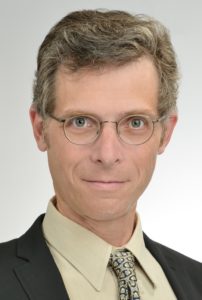 Short Bio: Erik Guttman, employed by Samsung Electronics, has been actively involved in networking and telecommunications standardization for over 20 years. He currently serves as the 3GPP Service and System Aspects Technical Specification Group Chairman. Preceding this, he held the position of 3GPP System Architecture working group for two terms. He has also chaired and actively contributed to numerous IETF working groups including SVRLOC (Service Location Protocol) and ZEROCONF (Zero Configuration Networking). Erik’s background includes leading research and product development projects that introduced emerging network application and system functions to operating environments. Erik developed frameworks and tools for distributed installation, testing and deployment. Erik served Chief Technical Officers as system architect and requirements researcher. Erik obtained a BA in Philosophy and Computer Science from the University of California, Berkeley and a MS in Computer Science from Stanford University.
Short Bio: Erik Guttman, employed by Samsung Electronics, has been actively involved in networking and telecommunications standardization for over 20 years. He currently serves as the 3GPP Service and System Aspects Technical Specification Group Chairman. Preceding this, he held the position of 3GPP System Architecture working group for two terms. He has also chaired and actively contributed to numerous IETF working groups including SVRLOC (Service Location Protocol) and ZEROCONF (Zero Configuration Networking). Erik’s background includes leading research and product development projects that introduced emerging network application and system functions to operating environments. Erik developed frameworks and tools for distributed installation, testing and deployment. Erik served Chief Technical Officers as system architect and requirements researcher. Erik obtained a BA in Philosophy and Computer Science from the University of California, Berkeley and a MS in Computer Science from Stanford University.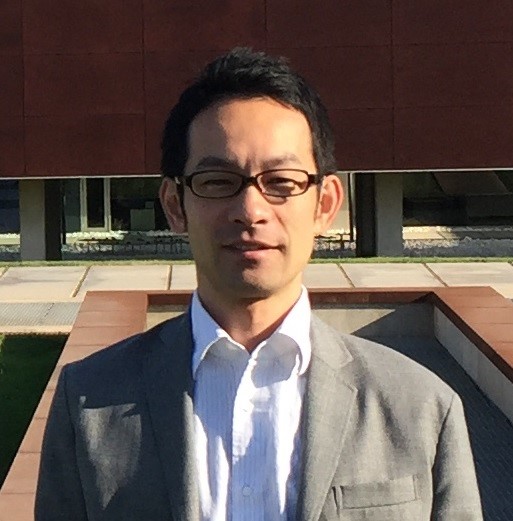 Short Bio: Takuya Shitomi joined NHK(Japan Broadcasting Corporation) in 2005. He is a research engineer in the Advanced Transmission System Research Division in NHK Science and Technology Research Laboratories (STRL) in Tokyo. From 2009, he has been engaged in research and development related to next generation of digital terrestrial broadcasting. He has participated in the standardization process of ATSC 3.0, within the ModCod Ad-Hoc Group. He was a guest researcher at the Mobile Communications Group, Institute of Telecommunications and Multimedia Applications (iTEAM), Universitat Politecnica de Valencia (UPV), Spain from 2016 to 2017.
Short Bio: Takuya Shitomi joined NHK(Japan Broadcasting Corporation) in 2005. He is a research engineer in the Advanced Transmission System Research Division in NHK Science and Technology Research Laboratories (STRL) in Tokyo. From 2009, he has been engaged in research and development related to next generation of digital terrestrial broadcasting. He has participated in the standardization process of ATSC 3.0, within the ModCod Ad-Hoc Group. He was a guest researcher at the Mobile Communications Group, Institute of Telecommunications and Multimedia Applications (iTEAM), Universitat Politecnica de Valencia (UPV), Spain from 2016 to 2017.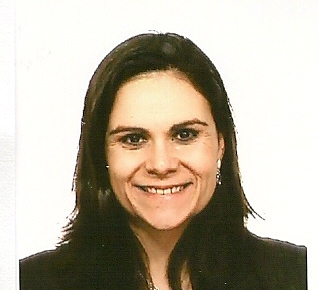 Short Bio: Maria Cuevas is the Head of Mobile core Networks and Services Team in BT’s Research department. She has 17 years of experience in telecoms, working on various technical roles ranging from designer, standards delegate, technical consultant, architect, and researcher. Maria’s team focuses on exploring and developing key evolution aspects of the 5G architecture, aiming to contribute to the evolution of the telecoms industry towards realising the 5G vision.
Short Bio: Maria Cuevas is the Head of Mobile core Networks and Services Team in BT’s Research department. She has 17 years of experience in telecoms, working on various technical roles ranging from designer, standards delegate, technical consultant, architect, and researcher. Maria’s team focuses on exploring and developing key evolution aspects of the 5G architecture, aiming to contribute to the evolution of the telecoms industry towards realising the 5G vision.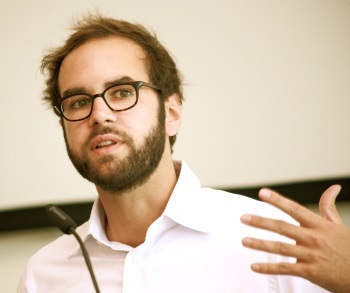 Short Bio: Benjamin Bross is a Project Manager at the Video Coding & Analytics Department of the Fraunhofer Institute for Telecommunications – Heinrich Hertz Institute, Berlin and a part-time lecturer at the HTW University of Applied Sciences Berlin. Since the development of the new H.265 | MPEG-H High-Efficiency Video Coding (HEVC) Standard, which started in 2010, Benjamin was very actively involved in the standardization process as a technical contributor and coordinator of core experiments. In July 2012, Benjamin was appointed as a co-chair of the editing Ad Hoc Group and became the chief editor of the HEVC video coding standard. At the Heinrich Hertz Institute, he is currently responsible for the development of HEVC encoder- and decoder software as well es investigating new video coding techniques for the next generation of video coding standards. Besides giving talks about recent video coding technologies, Benjamin Bross is an author or co-author of several fundamental HEVC-related publications, and an author of two book chapters on HEVC and Inter-Picture Prediction Techniques in HEVC. He received the IEEE Best Paper Award at the 2013 IEEE International Conference on Consumer Electronics – Berlin in 2013, the SMPTE Journal Certificate of Merit in 2014 and an Emmy Award at the 69th Engineering Emmy Awards in 2017 as part of the Joint Collaborative Team on Video Coding for its development of HEVC.
Short Bio: Benjamin Bross is a Project Manager at the Video Coding & Analytics Department of the Fraunhofer Institute for Telecommunications – Heinrich Hertz Institute, Berlin and a part-time lecturer at the HTW University of Applied Sciences Berlin. Since the development of the new H.265 | MPEG-H High-Efficiency Video Coding (HEVC) Standard, which started in 2010, Benjamin was very actively involved in the standardization process as a technical contributor and coordinator of core experiments. In July 2012, Benjamin was appointed as a co-chair of the editing Ad Hoc Group and became the chief editor of the HEVC video coding standard. At the Heinrich Hertz Institute, he is currently responsible for the development of HEVC encoder- and decoder software as well es investigating new video coding techniques for the next generation of video coding standards. Besides giving talks about recent video coding technologies, Benjamin Bross is an author or co-author of several fundamental HEVC-related publications, and an author of two book chapters on HEVC and Inter-Picture Prediction Techniques in HEVC. He received the IEEE Best Paper Award at the 2013 IEEE International Conference on Consumer Electronics – Berlin in 2013, the SMPTE Journal Certificate of Merit in 2014 and an Emmy Award at the 69th Engineering Emmy Awards in 2017 as part of the Joint Collaborative Team on Video Coding for its development of HEVC.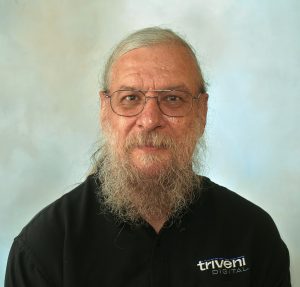 Short Bio: Dr. Chernock is currently Chief Science Officer at Triveni Digital. Previously, he was a Research Staff Member at IBM Research, investigating digital broadcast technologies.
Short Bio: Dr. Chernock is currently Chief Science Officer at Triveni Digital. Previously, he was a Research Staff Member at IBM Research, investigating digital broadcast technologies.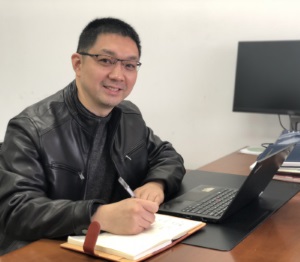 Short Bio: Dr. Dazhi He graduated from Shanghai Jiao Tong University in 2009. Since 2002, he had fully attended the standardization of first generation digital terrestrial television broadcasting system and was one of the key members in the technical working team. Some of his great contributions were adopted into the standard of first generation digital terrestrial television broadcasting (DTMB).
Short Bio: Dr. Dazhi He graduated from Shanghai Jiao Tong University in 2009. Since 2002, he had fully attended the standardization of first generation digital terrestrial television broadcasting system and was one of the key members in the technical working team. Some of his great contributions were adopted into the standard of first generation digital terrestrial television broadcasting (DTMB). 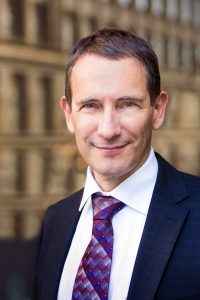 Short Bio: Peter Siebert is the Executive Director of the DVB Project Office in Geneva, where he is responsible for all operational aspects of the DVB organization. Prior to this he has been with Philips Kommunikations AG (PKI AG) in Nürnberg/Germany, SES in Luxembourg and Siemens Schweiz AG in Zürich/Switzerland. His professional career spans all aspects of audio-video technology such as video transmission over telecommunication networks (PDH/SDH), satellite and IPTV networks. He has been responsible for a number of ETSI standards in the area of satellite transmission as well as for DVB specifications. He holds several patents in the area of audio-visual data transmission.
Short Bio: Peter Siebert is the Executive Director of the DVB Project Office in Geneva, where he is responsible for all operational aspects of the DVB organization. Prior to this he has been with Philips Kommunikations AG (PKI AG) in Nürnberg/Germany, SES in Luxembourg and Siemens Schweiz AG in Zürich/Switzerland. His professional career spans all aspects of audio-video technology such as video transmission over telecommunication networks (PDH/SDH), satellite and IPTV networks. He has been responsible for a number of ETSI standards in the area of satellite transmission as well as for DVB specifications. He holds several patents in the area of audio-visual data transmission.